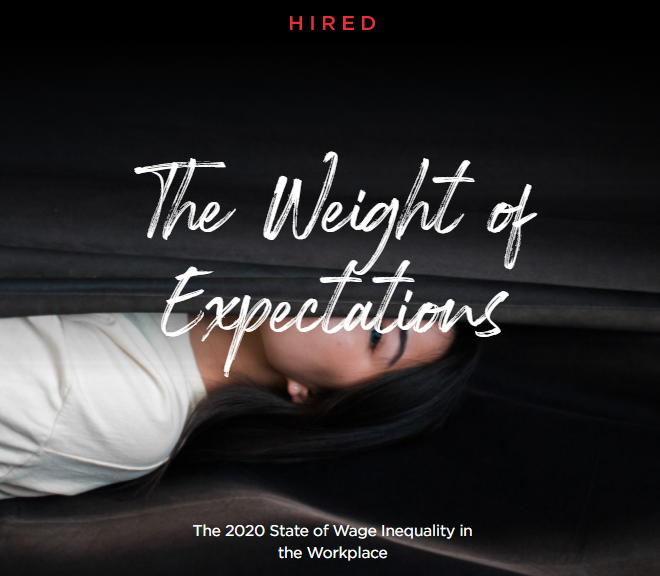The 2020 State Of Wage Inequality In The Workplace – Hired
The Hire’s 2020 State of Wage Inequality in the Workplace report explores the gap between gender and wage and salary expectations in the workplace. Data from this report was gathered from more than 2,400 job seekers.
Some main findings from this report include:
- Over 60% of female respondents claimed to have experienced discrimination due to their gender while only 7% of male respondents have the same experience.
- More than one-fourth of job seekers agreed that sexual harassment is a common discrimination form. Nearly half of male job seekers believed interview process bias was the discrimination form that normally happened to them while only 30% of female job seekers thought the same.
- Of all forms of discrimination, female respondents rated unfair salary and not being taken seriously as the most common discriminations they experienced due to their gender.
- Although more than 80% of women believed there was a gender wage gap, nearly half of the surveyed men didn’t believe so or was not sure.
- Only 60% of female respondents were aware that their salary was lower than their male colleagues and less than one-fourth male respondents knew about the similar situation. According to survey results, most of the time, people found out about wage gap through discussions with their co-workers.
- Once they’ve discovered the pay gap, most women would start finding a new job or go to their manager to discuss, while men were more likely to take no action.
- A majority of respondents claimed that they have successfully received a pay raise after negotiation with their employers. A small proportion of them either did not receive an increase in salary or only got a title promotion. The rest wanted to but decided not to negotiate or just didn’t negotiate the matter at all.
- It was evident from the report that female job seekers were more than 60% more likely to ask for a lower salary compared to men who applied for the same role.
- The expectation gap and the pay gap are the largest in New York, followed by Boston and SF Bay Area.
- People who are in their early 20s tend to have larger expectation gap and also are experiencing the largest pay gap due to their gender. People in their early 40s have the smallest gap in expectations and pay rates.
Full report here.
